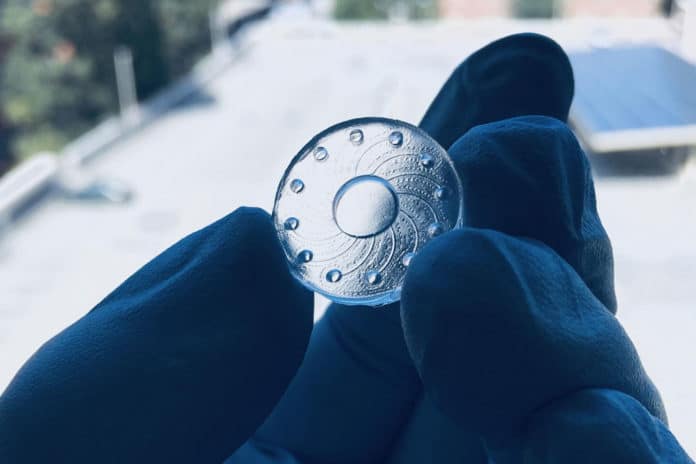Human bodily fluids and secretions contain molecules known as biomarkers that contain a wealth of information about the body’s health and the presence of disease. Among secretions such as tears, sweat, and saliva, tears are considered the best source of biomarkers, with concentrations similar to those found in the blood. Tears are also sterile, readily available, and less susceptible to the damaging effects of temperature change, evaporation, and the rate of secretion.
Useful and measurable biomarkers found in tears include sodium ions, which are useful indicators of dry-eye disease, and glucose molecules, an early diagnostic tool for diabetes. Also, measuring the pH of tears can be used to check for cell viability, drug effectiveness, and signs of disease.
A team of researchers from the Terasaki Institute for Biomedical Innovation has developed a contact lenses prototype that uses tears to monitor patient health. It is composed of the new specially engineered hydrogel, which is optimized to obtain elastic characteristics that would allow it to be engineered into various shapes with a smooth surface profile.
They then modeled the microchannels in the hydrogel with the use of a 3D printed mold. The final step in the manufacturing process was to enclose the hydrogel channels by bonding an additional layer of hydrogel to the surface of the microchannel.
Once the successful prototype was completed, it was extensively tested for its performance in channeling and collecting fluids. Flow rates of artificial tears in the channels were measured at different levels of hydration, with zero flow measured at complete dehydration and full spontaneous flow observed at full hydration.
“In addition to our successful fabrication of microchannels in commercial contact lens hydrogels, we also found that eye-blinking pressure may facilitate tear exchange in the lens through these microchannels,” said Shiming Zhang, Ph.D., from the Terasaki Institute’s research team. “This is an exciting finding because it opens the possibility for the lenses to be a means of preventing dry eye disease, a condition commonly found in contact lens wearers. We aim to develop a patented contact lens that actively treats this condition by enhancing tear flow in the eye.”
The team next prototyped sensors to collect, test for and measure pH levels of artificial tears flowing through the microchannels. Sodium levels were also tested, and the results showed an acceptable and predicted range of sodium detection for diagnostic purposes.
“The production of the successful prototype described here, and the continuing efforts to perfect its capabilities mark a significant advance in contact lens biosensing,” said Ali Khademhosseini, Ph.D., director, and CEO of the Terasaki Institute. “Such innovative work fits in well with our institute’s mission to create solutions that restore or enhance the health of individuals.“
